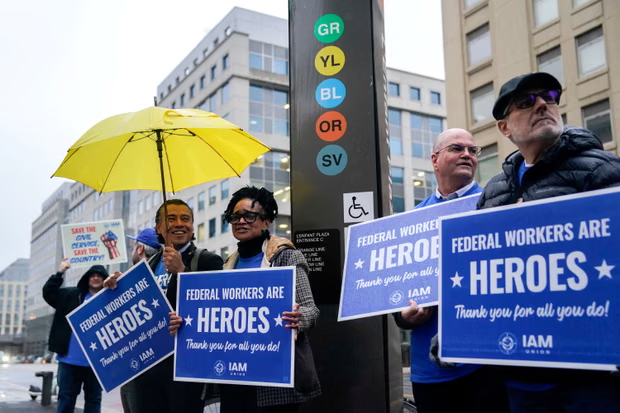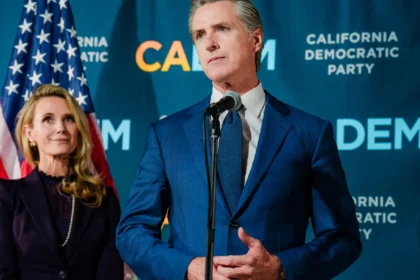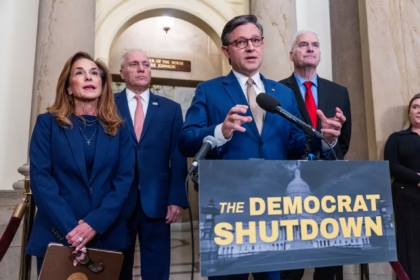The United States is witnessing an unprecedented mass resignation of federal workers as the Trump administration’s sweeping cuts push more than 100,000 government employees to formally quit under a deferred resignation program. This exodus, set to be the largest in American history, reflects deep-rooted fear, intimidation, and disillusionment within the federal workforce.
As Congress races toward a critical funding deadline, with a government shutdown looming, the White House has ordered agencies to prepare for massive layoffs should negotiations fail. This plan forms part of a broader strategy to drastically reduce the federal workforce, which officials claim will save billions annually despite the high upfront costs.
Federal employees say they feel forced out after enduring months of uncertainty, scapegoating, and deteriorating work conditions. A longtime Federal Emergency Management Agency (FEMA) worker described how the removal of mission-driven work, job insecurity, and work-life imbalance compelled their departure: “Federal workers stay for the mission. When that mission is taken away, when they’re scapegoated, when their job security is uncertain, and when their tiny semblance of work-life balance is stripped away, they leave.”
The deferred resignation program is expected to cost $14.8 billion, covering salaries and benefits for roughly 200,000 employees placed on administrative leave for up to eight months. Yet Trump administration officials argue the expenditure is justified, stating that it reduces long-term government spending. The Office of Personnel Management advocates for a more flexible, “at-will” employment system similar to the private sector, criticizing the traditional protections afforded to federal civil servants.
A White House spokesperson touted the program as “the largest and most effective workforce reduction plan in history,” claiming it will save $28 billion annually. They estimate total workforce reductions—including voluntary separations, attrition, and early retirements—could reach 275,000 federal employees.
This mass departure represents the largest civilian federal workforce decline since World War II. Thousands more have been dismissed through forced reduction mandates, exacerbating the crisis.
Federal employees who accepted deferred resignation offers often spoke anonymously, wary of harming their future job prospects or the possibility of returning to government service. Many are now navigating a fragile job market, where the August 2025 unemployment rate climbed to 4.3%, the highest since 2021, and only 22,000 jobs were added amid ongoing economic uncertainty fueled by Trump’s tariff policies.
“It’s a huge grieving process,” said a Department of Veterans Affairs (VA) employee who took the offer. “Many of us thought we could finish our careers with the government. We felt deeply connected to the mission, especially at the VA. But the months leading up to the resignation decision were marked by burnout and mental health struggles.”
The same employee shared the challenge of explaining their departure during job hunts. “The job market stinks right now,” they said. “While it’s a relief not working 60 to 70 hours a week anymore, leaving also means losing the support system from colleagues who stayed, and facing judgment for stepping away.”
An archaeologist at the Department of Agriculture, also a military veteran, described feeling compelled to resign due to fear and pressure. “I was forced to accept the resignation plan—not physically, but through constant intimidation and a toxic environment,” they said. They referenced a statement from Russell Vought, head of Trump’s Office of Management and Budget, who had openly vilified federal workers: “When they wake up in the morning, we want them to not want to go to work… We want their funding to be shut down… We want to put them in trauma.”
“This is exactly what happened,” the USDA worker said. “I lived every day with the fear that I might be fired or blocked from future federal work. The constant threat destroyed any sense of job security.”
Another USDA employee, fired as a probationary worker and later reinstated, eventually resigned under the deferred plan, explaining, “It’s hard to focus on work when you can be terminated with an email. They changed the terms of employment so drastically. I hoped things would stabilize, but now the chance of returning seems slim.”
Labor unions, including the American Federation of Government Employees (AFGE), have sued the administration, arguing the resignation program circumvents Congress, undermines essential government functions, and creates a hostile workplace through threats of mass firings.
“Purging the federal government of dedicated career employees will cause chaos for the American public who rely on government services,” AFGE President Everett Kelley said. “This program should not be seen as voluntary. The administration’s anti-worker policies have made the federal government a toxic place where people cannot stay, even if they want to.”
The consequences of this historic workforce reduction will ripple across government operations and the nation’s ability to serve its citizens effectively. With critical agencies losing expertise and capacity, many fear that public services will suffer in quality and responsiveness.
As the political battle over government funding intensifies, the Trump administration’s approach raises urgent questions about the future of the federal workforce, public trust in government, and the durability of American institutions.











